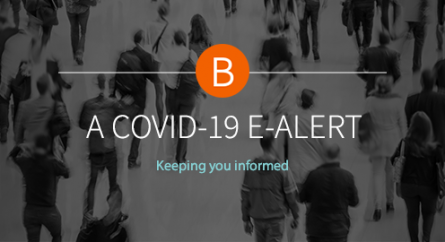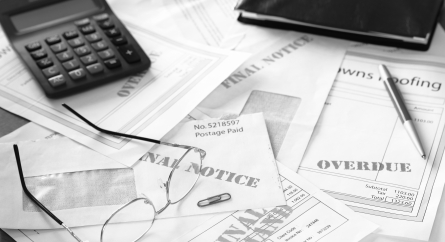Client Alert: Six Questions About Involuntary Bankruptcy
Trying to collect money from someone who cannot or will not pay you is frustrating. That old chestnut about throwing good money after bad comes to mind. Placing an individual or firm (your “debtor”) into bankruptcy is a powerful remedy to secure payment. But it should not be undertaken without careful thought and planning.
A creditor should ask the following six questions before placing a recalcitrant debtor into bankruptcy.
Who Are You?
An involuntary case starts with a petition filed with the bankruptcy court. In order to sign and file that petition you must be a creditor holding a non-contingent, undisputed debt. You will have the burden of proving that your claim is not subject to a bona fide dispute as to liability or amount. If your claim is based on a contract, that should be relatively easier to establish than if your claim is based on a tort for which you have yet to obtain a judgment.
You cannot acquire a debt from someone else for the sole purpose of putting the debtor into bankruptcy.
Who is Your Debtor?
You can put a natural person, partnership, or corporation into bankruptcy provided it has a residence, place of business, or property located in the United States. You cannot put a religious institution, non-profit, or charitable organization into bankruptcy. Once the bankruptcy is filed, the case does not terminate if the firm dissolves, or if the individual dies or becomes incompetent.
As a petitioning creditor, you have a duty to reasonably investigate the debtor’s affairs prior to filing an involuntary bankruptcy petition. That requires knowing more about the debtor’s operations than just its transactions with your firm. You might not have the luxury of time to learn these facts. If the debtor is engaging asset-depleting transfers, you might need to move fast. But urgency should not excuse making a reasonable effort to learn about the debtor so that you can be prepared to defend the petition if the debtor later disputes that it should be in bankruptcy.
Know Any Other Creditors?
The key numbers are 3 and 12. If the debtor has fewer than 12 creditors, then you can file the petition by yourself. If the debtor has more than 12 creditors, you must find 2 creditors to join you in the petition. The three of you must hold non-contingent, undisputed, and unsecured debts totaling at least $16,750. The debt minimum is measured in aggregate, which means that two of the creditors can hold claims that are fully secured provided that the third creditor has an unsecured claim of at least $16,750. Employees, insiders, and persons who have received fraudulent or preferential transfers from the debtor are excluded from the creditor count.
What’s the Best that Could Happen?
Filing an involuntary bankruptcy case against someone is analogous to suing them. Once the petition is filed, the court will issue a summons requiring the debtor appear and answer the petition. The Bankruptcy Code automatically stays all collection activity against the debtor while the case is pending.
If the debtor does not answer the petition, the bankruptcy court will enter the “order for relief,” which officially starts the bankruptcy case. As a petitioning creditor you have the choice of placing the debtor in liquidation (chapter 7) or reorganization (chapter 11). Involuntary reorganizations are exceedingly rare because the debtor is often defunct (in the case of a corporation) or non-cooperative (in the case of an individual). For this reason, involuntary bankruptcies usually proceed under chapter 7.
Every chapter 7 case is run by a trustee, with a mandate to investigate the debtor’s affairs, collect and liquidate property of the estate, and distribute proceeds to creditors. If the debtor engaged in asset-depleting transfers prior to the bankruptcy, the trustee will invoke the Bankruptcy Code’s “strong arm” powers to sue and recover the property transferred for the benefit of the estate. The pursuit and recovery of pre-bankruptcy transfers will be the predominant focus of most involuntary cases, especially if the debtor is insolvent at the time of filing. You and your counsel should investigate the viability of such claims prior to filing the case and share your knowledge with the trustee once the case begins.
As a petitioning creditor, you will receive a priority claim against the estate assets for the costs of expenses (including attorney fees) of bringing the involuntary bankruptcy. But your underlying claim against the debtor is not given special treatment just because you were the creditor who put the debtor into bankruptcy. Once the order for relief enters, all creditors will have the opportunity to file proofs of claim against the estate. You will share with them in any recovery. It is important to know who your fellow creditors are in order to estimate your recovery. I explain creditor payment hierarchies in my series Getting Paid in Bankruptcy.
Even in the best of circumstances, an involuntary bankruptcy process can take a significant amount of time to play out. You will not control the process, and at the end of the day, the assets recovered might be insufficient to pay all creditors in full. On the other hand, the bankruptcy court has nationwide jurisdiction and the trustee can sue third parties located virtually anywhere and bring them into the bankruptcy court to answer fraudulent transfer and preference claims. If someone has “raided” the debtor, and if the claims are sufficiently large, the time and expense of an involuntary bankruptcy might be justified.
What’s the Worst that Could Happen?
If the debtor contests the petition, the bankruptcy court will hold an expedited trial to determine whether to enter the order for relief. As the petitioning creditor, you must prove that the debtor is “generally not paying” its debts as they become due. (Alternatively, if a custodian has recently taken possession of the debtor’s assets the court will allow the bankruptcy to proceed. The reason for this rule is that if the debtor is already liquidating under state law, creditors are entitled to have that process continue under the watchful eye of the bankruptcy court.) The court will consider the number of debts that the debtor is not paying, the materiality of nonpayment, and/or whether creditors have commenced lawsuits against the debtor. The court will also look at the debtor’s conduct: is the debtor paying insiders or preferred creditors? has it drawn down on credit lines or defaulted under its loan agreements? is it liquidating its assets and winding down? Such inquiries are highly fact determinative and it behooves the petitioning creditor to gather as much relevant information as possible prior to filing the petition.
If it turns out that you are the only creditor the debtor is not paying, the court will probably dismiss the case. Dismissal of an involuntary bankruptcy case can sting. The court can require you to pay the debtor’s costs incurred defending the case. If the court finds that you filed the petition in bad faith (and “bad faith” can mean failure to reasonably investigate the debtor’s affairs prior to filing) you can be liable for any damage that debtor suffered as a result of being put into bankruptcy. Damages may include lost profits, loss of earning capacity, harm to reputation, and interest on monies borrowed to maintain business operations. The court can even award punitive damages if the petitioning creditors behaved particularly recklessly or with intent to injure the debtor. The court might require you to post a bond at the start of the case to indemnify the debtor for these potential damages. Furthermore, you cannot offset a judgment to pay the debtor’s costs and damages against the original debt that the debtor owes you. You must part with actual cash to settle a damages award.
Once the case is filed, you do not have a right to dismiss it yourself, either. If you reach a deal with the debtor, the court may dismiss the petition only after giving notice to all creditors, including those who did not join in filing the petition. Those other creditors can oppose dismissal if they would prefer to see the bankruptcy case proceed. This avoids collusive settlements that favor petitioning creditors at the expense of other creditors.
Is There a Better Alternative?
Think of the debtor’s financial health on a spectrum ranging from insolvent and illiquid to solvent and highly liquid. Involuntary bankruptcy is a strategy for the cases on the extreme ends of this spectrum. If the debtor is completely insolvent, an involuntary bankruptcy might help preserve assets and recover fraudulent transfers. If the debtor is highly liquid but ignoring the creditor, an involuntary bankruptcy might force a quick settlement and consensual case dismissal paying the creditor in full.
For the cases in the middle, however, the costs and risks of involuntary bankruptcy are magnified. Bankruptcy’s strengths are a centralized proceeding, administered by a neutral trustee under court supervision. Its weaknesses are time, costs, and deterioration of the enterprise value of the debtor. While a petitioning creditor bears the risk of filing the bankruptcy, it must share the gains with all creditors according to the Bankruptcy Code’s payment priorities. For the average debtors, who are struggling but still operating, it is sometimes preferable to negotiate and accept a discounted recovery outside of court, rather than initiating a bankruptcy process where the outcome is likely to result in a net loss. This conclusion might be unsatisfying to a frustrated creditor, but those, my friend, are the brakes.
Categorized: Client Alerts, Publications
Tagged In: Bankruptcy Code, involuntary bankruptcy, debt







